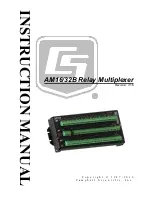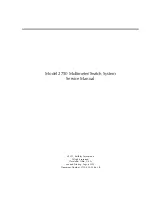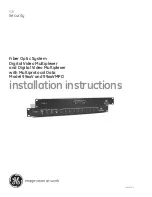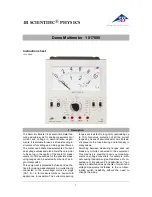
31
Subject to change without notice
Temperature measurements
Choose the temperature measurement function
(°C or °F) using
19
,
18
key. The tempera-
ture probe is connected between the COM ter-
minal
and the V/ /T°/dB terminal
.
Temperature measurement requires a tempera-
ture probe type PT100 as per standard EN60751.
The use of another probe is possible but can
generate additional errors due to a different link
cable resistance. All keys except
19
,
18
and
HOLD/OFFSET
are inactive for this function.
After the instrument has been turned-on, the line
resistance value of the temperature probe is
automatically compensated.
On starting, simultaneously pressing BEEP
and OFFSET
will eliminate probe cable
resistance compensation (zero value). In all
cases, compensation can be carried out by setting
the probe to a temperature of 0 °C and using the
OFFSET function.
Note:
Measurement of the temperature probe
line resistance should be made on the same
instrument used for temperature measurements.
Only this procedure guarantees the specified
measurement error.
Decibel measurements
Choose the decibel measurement function using
19
,
18
key. For decibel measurements, the
unknown input voltage is connected between the
COM terminal
and the V/ /T°/dB terminal.
The HM8012 is used for DC or AC voltage mea-
surements in decibels. The 0 dB reference is
defined for 1 mW power in a 600 load., i.e. a
voltage of 0.7746 V. The scale extends from –
78 dBm to 59.8 dBm.
In a 50 -system, the reference voltage for 1mW
power is 0.2236 V. In a 75 -system, the reference
voltage for 1 mW power is 0.2739 V.
If decibel measurements are made on a 50 -
system, add 10.8 dB to the displayed value. If
decibel measurements are made on a 75 -
system, add 9 dB to the displayed value. The
mathematical relationship is as follows:
R= Reference resistance in ; P
0
= 1 mW; V
0
in V
Sign consideration: A displayed value of –12 dB
is equivalent in 50 to: –12 dB +10.8 dB = –1.2 dB
Remote control
HM8012 includes a front panel connector
13
for
controlling the equipment by means of a point-
to-point serial link. There are three wires used :
RxD (Receive Data), TxD (Transmit data), SGnd
(Signal Ground). The signal voltage levels must
comply with the following levels (+/- 15 V max.,
+/- 3 V min.).
The link is of the bi-directional asynchronous type
with a fixed configuration: 4800 Baud, 8 bits, no
parity, one stop bit. The synchronization protocol
is XON/XOFF (half duplex) and is also fixed.
Each control must have two ASCII code
characters followed by character 13 (symbolized
as
<
CR
>
in ASCII) or two characters 13 and 10
(symbolized as
<
CR
>
<
LF
>
in ASCII), while the
<
LF
>
character is ignored during reception.
The instrument internal buffer includes only
three characters, and there is no way of sending
more than one command at a time. On reception
of terminator
<
CR
>
, the equipment sends the
character 19 (
<
DC3
>
ASCII) to indicate that the
dialogue is suspended. As soon as it is possible
to resume dialogue, the instrument sends
character 17 (
<
DC1
>
ASCII). The commands are
divided into five groups:
Function commands
These commands are used for choosing another
magnitude to be measured and corresponding to
the choice of FUNCTION key on the front panel.
VO
<
CR
>
voltage measurement (VOLT)
AM
<
CR
>
current measurement (A)
MA
<
CR
>
current measurement (mA)
OH
<
CR
>
resistance measurement
DI
<
CR
>
diode test
TC
<
CR
>
temperature measurement in °C
TF
<
CR
>
temperature measurement in °F
DB
<
CR
>
measurement in dB.
R e m o t e c o n t r o l
















































